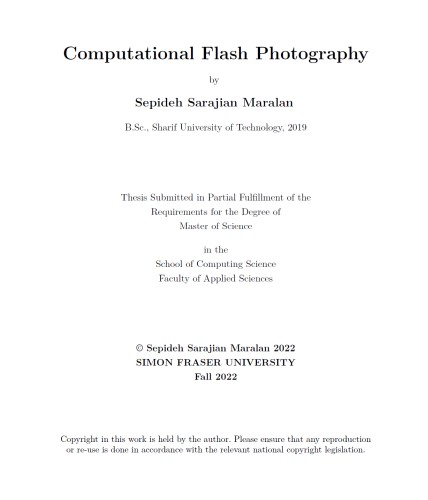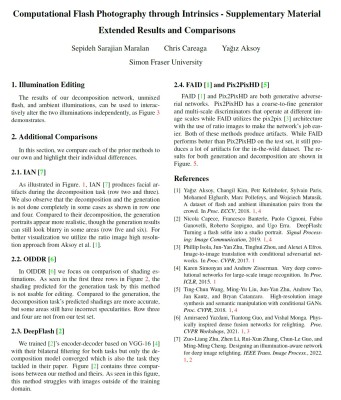
We address two aspects of computational flash photography, generation of flash illumination from a no flash image and decomposition of a flash photograph to its ambient and flash illumination components. These components allow us to edit the illuminations to make them stronger or weaker. We employ two methods to address our tasks; one using image-to-image translation, as seen on the left, and another using intrinsic components, as seen on the right.
Abstract
The majority of common cameras have an integrated flash that improves lighting in a variety of situations, particularly in low-light environments. Before capturing an image, the photographer must make a decision regarding the usage of flash. However, flash strength cannot be adjusted once it has been utilised in an image. In this work, we target two application scenarios in computational flash photography: decomposition of a flash photograph into its illumination components and generating the flash illumination from a given single no-flash photograph. Two distinct approaches based on image-to-image transfer and intrinsic decomposition with the use of convolutional neural networks are employed to address these tasks. An additional network boosts and upscales the estimated results to generate the final illuminations. Key advantages of our approach include the preparation of a large flash/no-flash dataset and presenting models based on state-of-the-art methods to address subtasks specific to our problem.
Dissertation
 |
Video Presentation
BibTeX
author={Sepideh Sarajian Maralan},
title={Computational Flash Photography},
year={2022},
school={Simon Fraser University},
}
Publications in the context of this thesis







